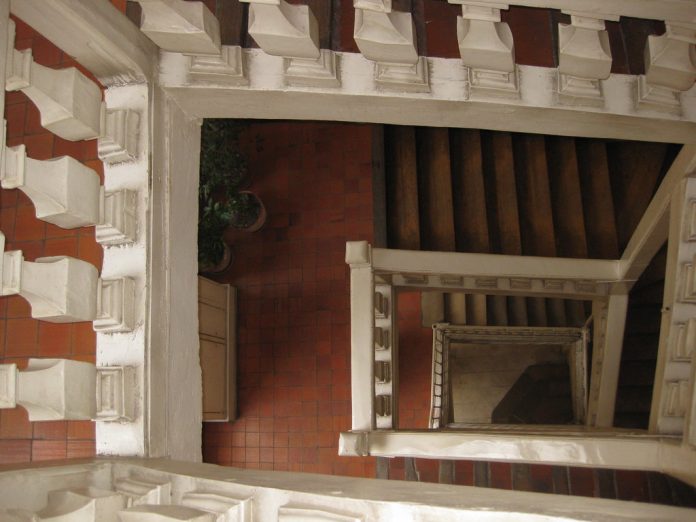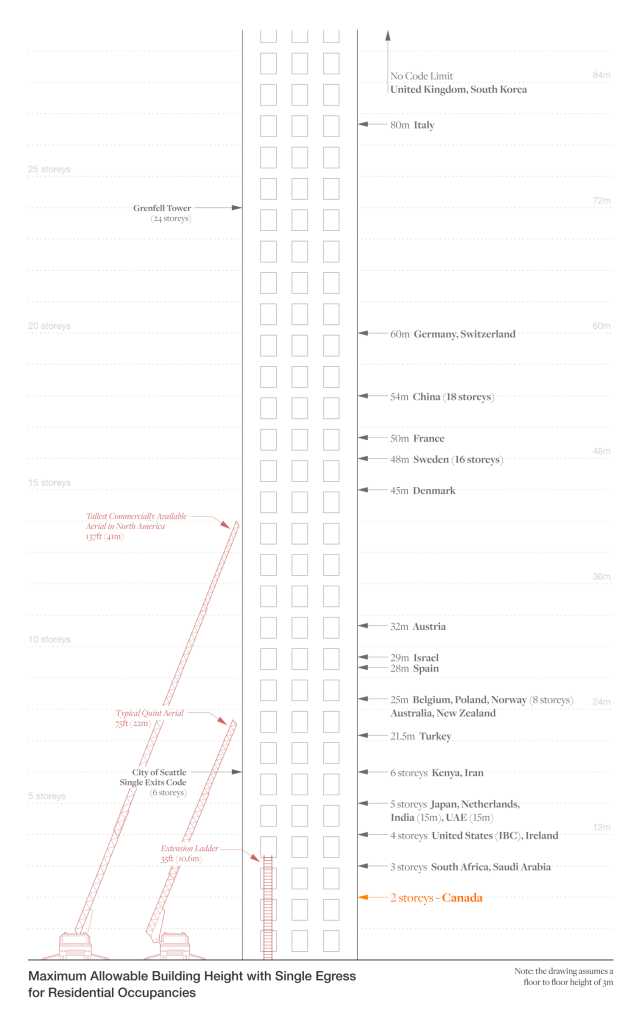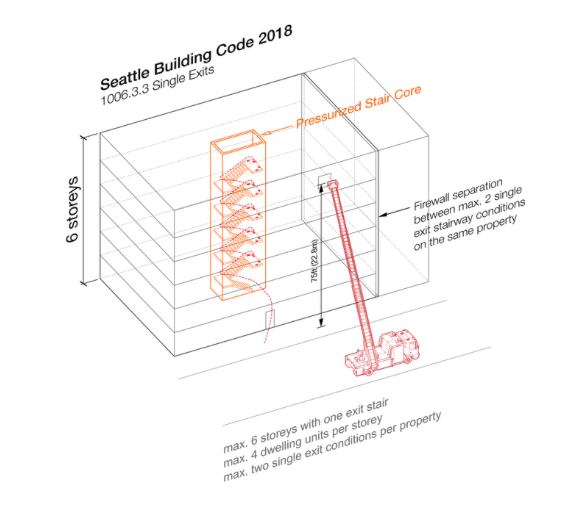
Seattle doesn’t lead on a lot of things when it comes to building codes, land use codes, or even energy codes — though given that our housing deficit is in the hundreds of thousands and we can’t come anywhere close to meeting our climate goals, we absolutely need to. Yet, there is one place when it comes to construction and codes where Seattle leads, and that’s in allowing multi-story, multifamily buildings with a single stair.
Now, I know what you’re thinking. “Every multifamily building requires two exits.” It’s one the of the most common mantras drilled into university students at American and Canadian architecture schools. What if I told you that this mantra wasn’t true? What if I told you that most multifamily buildings in Europe weren’t like multifamily buildings in the United States, with multiple stairways and dark internal corridors — rather, multistory buildings with just one stairway. Hell, most aren’t even sprinklered. Would you believe me? Because it’s true.
In 2017, I was in Vienna to attend the International Passive House Conference, and several of the projects presented were buildings from five to eight stories with just one stairway. Many of the stairways were situated in the middle of the building, but were light-filled, with wonderful atriums so residents could communicate. That’s when I had an epiphany. Buildings with this condition (ie. appearance or working order in architecture speak) were everywhere. They were in the hotels we stayed at when I was a kid growing up in Europe. They were in the mixed-use building I rented an apartment in while working in Freiburg during university. In the baugruppen, I wrote about a decade ago. They were even in the Gruenderzeit building our Viennese accommodations were in. Every corner I turned, there was another. And another. The concept consumed me.
It’s a topic that I have been loosely researching and writing and tweeting about for years. But a really funny thing happened when I wrote an article for Treehugger on single stair buildings in late April. One of the readers was Conrad Speckert, a grad student at McGill University in Montréal. Conrad had written a paper on the subject earlier this year. After reading my article, he realized that he needed to do his thesis on this subject.
This week, Conrad’s thesis made its way into the world, and it is glorious. Second Egress is a living website, documenting how most of the world allows single stair buildings, and how high — resulting in one of the most amazing architectural diagrams I have seen in years, at right. Conrad has collated dozens of built examples from all over the world, highlighting their single stair conditions. He’s researched building ordinances from 25 countries. It turns out, a number of countries allow buildings from four to ten stories to have a single exit. These buildings are found everywhere. France. Germany. Austria. Mexico. Japan.
Second Egress notes two things of significance. One, that Canada has some of the most restrictive building ordinances when it comes to buildings with a single stairway, only allowing a two-story multifamily building (or three, if one of the units is a two-story maisonette). Second, that Seattle’s ordinance on single stairs is the most liberal in the United States (or at least, that either of us has found to date). Speckert also highlights an approved code modification for a seven-story single stair building on Capitol Hill.
Seattle’s building code is based on the Washington Building Code, which is the latest iteration of the International Building Code (IBC) with amendments adopted by the Washington State Building Code Council. The IBC is a nonprofit that writes model codes that are largely used by American states, and a handful of small countries around the world. Seattle has specific amendments to the Washington State Building Code, and one of those is Section 1006.3.3 Single exits, which lays out the requirements for single exit buildings of up to five and six stories.
Seattle’s code in this regard isn’t extremely different from what various federal states in Germany allow. They both allow four units per stairway, per floor. Seattle’s code allows this condition twice on the same lot, whereas Germany’s regulations (and most of Europe) have no limit on how often this condition can be repeated on a parcel. They both are regulated by travel distance to the exit (stairway). They both require protected or exterior stairways. There are two big differences though. Seattle generally maxes out at five stories, or could do six stories with live-work units or mixed-use. Germany’s height regulations allow the topmost floor of a single stair condition to be up to 22 meters. There are means to get up to 60 meters with a single stair in Germany, but this is a theoretical limit; jurisdictions generally limit this maximum height to the topmost floor that the fire brigade can reach in that city with a fire apparatus. Sprinklers are also incredibly rare in multifamily housing in Europe. Japan also allows buildings up to ten floors to have a single stair, so there are seismic regions that have much more liberal regulations than even Seattle.
In an odd coincidence concurrent to this, my recently founded firm, Larch Lab, is in the process of wrapping up a report on single stair buildings for a jurisdiction in Canada. My report will focus on how single stair buildings are one of the keys to unlocking livable, resilient, decarbonized missing middle and mid-rise housing. It dovetails incredibly well with the research Conrad has been collating, and will get more into the qualitative aspects of single stair buildings that make them so incredible. I have long believed with the introduction of mass timber, we would start to see more of the buildings I moved back to Germany to work on just a few years ago. Perhaps now, with robust debates, recognition of modern fire fighting techniques, and round tables with other jurisdictions, we just might see more here.
Mike is the founder of Larch Lab, an architecture and urbanism think and do tank focusing on prefabricated, decarbonized, climate-adaptive, low-energy urban buildings; sustainable mobility; livable ecodistricts. He is also a dad, writer, and researcher with a passion for passivhaus buildings, baugruppen, social housing, livable cities, and car-free streets. After living in Freiburg, Mike spent 15 years raising his family - nearly car-free, in Fremont. After a brief sojourn to study mass timber buildings in Bayern, he has returned to jumpstart a baugruppe movement and help build a more sustainable, equitable, and livable Seattle. Ohne autos.





